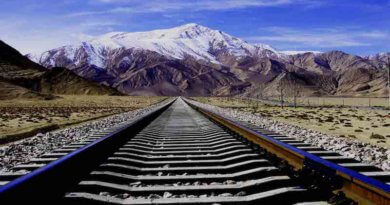China’s Belt and Road could derail Paris climate goals

DHARAMSALA, 3 Sept: China’s ambitious Belt and Road Initiative(BRI) could render the Paris climate goals unreachable, media reports said citing a new study released on Monday.
Countries that are part of China’s BRI could jeopardise the Paris climate goals if they continue along a path of increasing carbon emissions, SCMP reported citing the analysis of the possible carbon footprint of infrastructure development in BRI countries.
According to the new analysis, if the countries did not rein in emissions, temperatures could rise by nearly 3 degrees Celsius by 2050, and that “investment decisions made now could make or break Paris Agreement targets,” the report added.
The report on the carbon footprint of infrastructure development in BRI countries under Beijing’s sprawling infrastructure and investment scheme that seeks to link China with Asia, Europe, Africa and beyond via a network of railways, roads, ports, power plants and other projects – was put together by Chinese, European and US researchers the Tsinghua Center for Finance and Development.
While the Paris climate goals, signed in 2015 aims to keep average global temperature rises under 2 degrees Celsius above preindustrial levels, the report has highlighted that the 126 BRI countries excluding China currently account for 28 per cent of manmade emissions.
The report further called on Beijing to strengthen finance requirements for projects under the initiative to help reduce its carbon footprint and to promote green investment.
“The Belt and Road Initiative offers an opportunity to decarbonise particularly infrastructure investment,” Simon Zadek, lead author of the report and a senior visiting fellow at Tsinghua University’s Centre for Finance and Development in Beijing has said in the report.
“The main reason for focusing on the [belt and road] is that it provides a pathway … that aligns with the interest of the countries involved and the interest of China,” he added.
The report suggested that the emissions can be fixed through policy measures, investor commitments and transparency, and international cooperation.
The BRI is China’s global development strategy that involves infrastructure development and investments in 126 countries across Asia, Africa, the Middle East and Europe.
The project, often described as a 21st-century silk road is made up of a “belt” of overland corridors and a maritime “road” of shipping lanes and Beijing maintains that its intention is to promote economic co-operation among countries along the proposed Belt and Road routes.
China’s ambitious yet controversial BRI made headlines lately for all the wrong reasons and as it becomes increasingly clear that China’s design of the Belt and Road investments is anything but a debt-trap, many countries are scaling down or scrapping entire projects that are part of China’s BRI amid mounting financial concerns over the continent-spanning venture.






